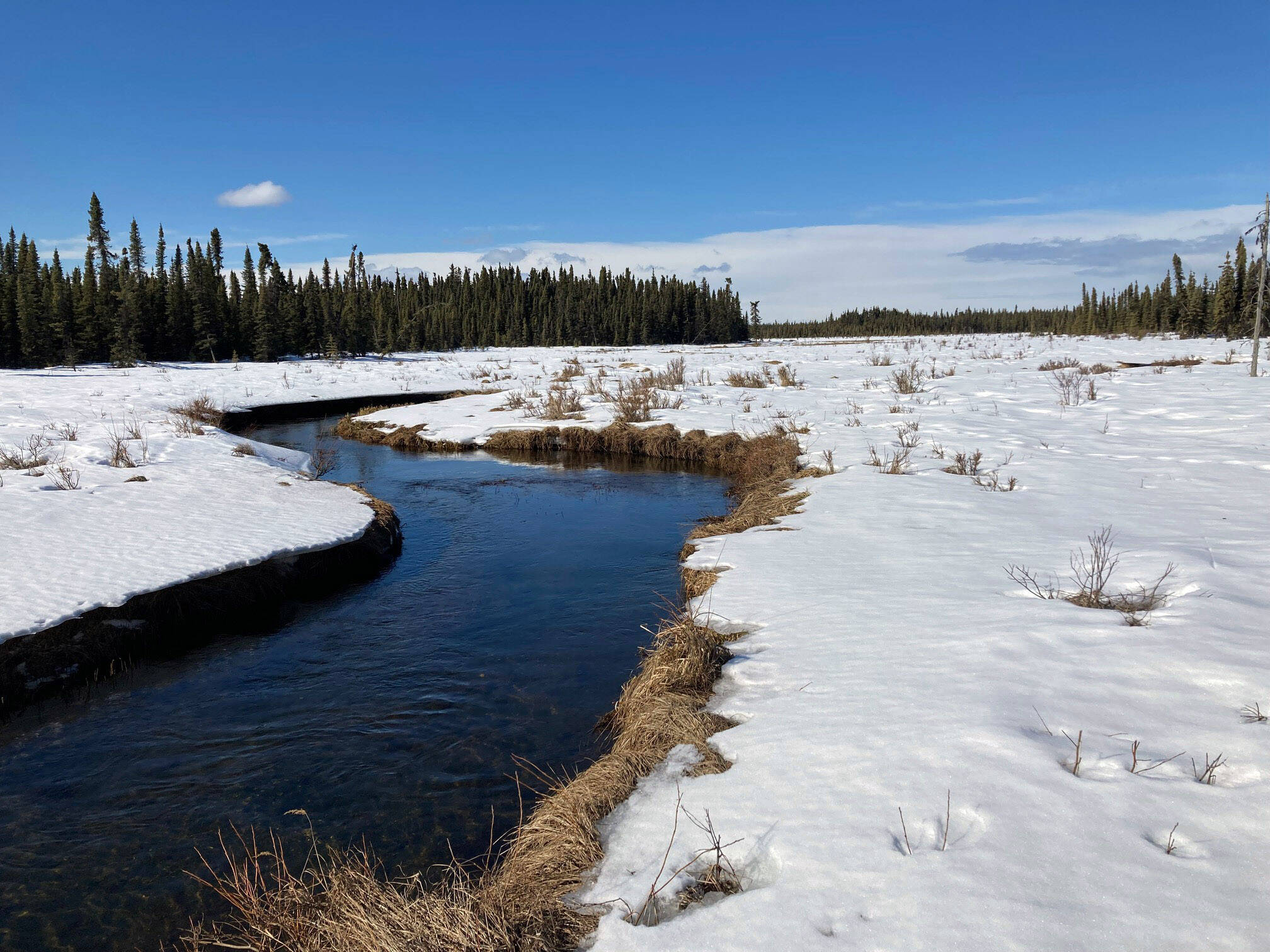On Oct. 31, 2021, I ran down to Headquarters Lake in the Kenai National Wildlife Refuge hoping to see some signs that the lake would soon be skateable.
Nothing.
As I stood on the boardwalk overlooking the lake, with a gate leading to the dock closed in front of me, the feeling of precipice was strongly in the air.
Soon, in a remarkable transformation, the lake and surrounding wetlands would be frozen and covered in snow. The gate would be open to exploring the refuge on skates, skis and snowshoes in a way that was impossible in the summer.
I never did get to skate Headquarters Lake. The cold and snow came with such synchronicity that most of the local lakes were quickly coated in thick powder as soon as they were frozen.
That didn’t close the gates of adventure in the refuge.
On Feb. 28, the snowpack baked in the day’s sun and froze solid at night, setting up with a solid crust on top and allowing lightning passage to all treeless areas. I put on my skis on that same boardwalk and rode that white crust over the water and soft, marshy land that had been blue, green and impassable back on Oct. 31.
After the crust was covered in soft snow for a spell, I was back on the hard stuff March 21, floating effortlessly as I darted between Headquarters and Nordic lakes.
The crust was just starting to get good. The Swan Lake canoe system beckoned.
In “The Kenai Canoe Trails: Alaska’s Premier Hiking and Canoeing System,” Daniel L. Quick writes, “If you have invested the effort to portage and paddle your way south through Otter, Duckbill, Weasel, and the Minks, then you are about to be rewarded for your hard work with the queen lake of the southern Swan Lake System. Camp Island Lake is indeed a royal body of water surrounded by magnificent country.”
On March 23, snowshoes got me from Swanson River Road to Camp Island Lake in less than an hour. From here, I donned skate skis and followed the west fork of the Moose River (noted by Quick as a “challenging float” and “not a trip for the timid or ill-prepared”) for a stretch before rocketing to Rock and Loon lakes.
Crust skiing trips that followed would allow me to explore Mosquito, Lily, Silver, Little Mink, Contact, Marten, Spruce and Canoe Nos. 1, 2 and 3. The voyages would call to mind not Quick, but a paragraph from “Seward Soundboard” by local author Sean Ulman:
“Astonished at how quickly they had arrived under the north face of Mt. Ascension, one remarked, ‘Why not extra fast? Crust skiing warps space and time.’”
But the feeling of precipice is back in the air.
In last week’s “Refuge Notebook,” Supervisory Wildlife Biologist Kris Inman wrote about the remarkable period of change the Kenai Peninsula undergoes starting at the spring equinox March 20. On March 20, there are 12 hours, 15 minutes, of daylight. That’s up to 14:40 by April 15, 17:20 by May 15 and 19:05 by the summer solstice June 21.
This magical snowpack can’t hold up forever. Any day, I’ll excitedly rush to a planned skate ski only to find a magical place has vanished just like “Brigadoon.”
Zipping around Camp Island Lake will again be hard work, the west fork of the Moose will not be for the timid and ill-prepared, and Mosquito Lake will have mosquitoes.
With that shift, though, mountain trails will be thawing out and clearing of avalanche danger, once again inviting trips that are only undertaken by the most intrepid travelers in the winter.
Precipices will be actual precipices again.
We are truly lucky to live in a place where the constant and rapid progression of the seasons unveils new challenges and opportunities.


